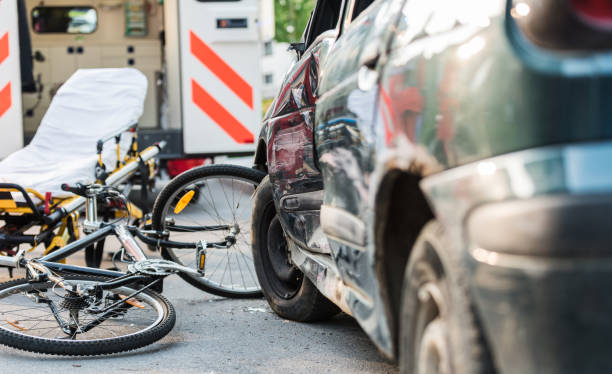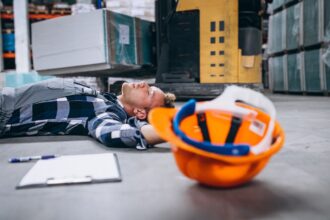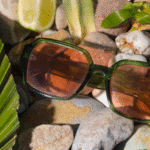If you’ve ever cruised through the sunny streets of Hallandale Beach on your bike, you know how freeing it feels. The ocean breeze, palm-lined streets, and active lifestyle make it a hotspot for cycling. But with that also comes a risk that many don’t think about until it’s too late—bicycle accidents. Bicycle accidents Hallandale aren’t just rare incidents; they’re more common than you might think, especially with the mix of traffic, tourists unfamiliar with local roads, and sometimes distracted drivers. When these accidents happen, they often lead to serious injuries that can take a long time to heal, physically and emotionally.
Let’s break down some of the most common injuries cyclists face in Hallandale Beach and why they’re so frequent here. Whether you’re a casual beach cruiser or a serious road cyclist, understanding these risks can help you stay alert and ride safer.
1. Head Injuries – Not Always Just a “Bump”
When a cyclist hits the ground, the head is one of the most vulnerable parts of the body. Even with a helmet, the impact can cause anything from a mild concussion to a traumatic brain injury (TBI).
In Hallandale Beach, cyclists often share the road with fast-moving vehicles. One sudden swerve or an unexpected door swing from a parked car can send a rider flying. In these scenarios, the head often takes the brunt of the fall.
Symptoms of head injuries may include confusion, headaches, dizziness, nausea, or memory problems. And remember—some signs don’t show up right away, so even if it feels like a “small hit,” it’s best to get checked out.
2. Broken Bones – From Wrists to Collarbones
One of the most common reflexes during a fall is putting out your hands to break the fall. Unfortunately, this leads to broken wrists and arms more often than not. Collarbones and ribs also tend to suffer due to the awkward angles at which people fall during a crash.
In bicycle accidents in Hallandale, broken bones are especially common at intersections and crosswalks, where collisions are most frequent. These injuries can take weeks to months to heal and might even require surgery or physical therapy, especially if they’re severe.
3. Road Rash – More Than Just Skin-Deep
Think of road rash as a really bad scrape—only it usually covers a large portion of the body. When a cyclist slides across the pavement, the skin can peel away, sometimes even exposing layers of muscle underneath.
In Hallandale Beach, with its many paved roads and sidewalks, a fall can cause major abrasions. And because our climate is warm and humid, infection is always a risk if the wound isn’t treated properly.
Beyond the physical pain, road rash can leave scars and affect self-confidence, especially if the injuries are on visible parts of the body like arms, legs, or the face.
4. Back and Spine Injuries – The Silent Threat
Spinal injuries can be extremely serious and life-changing. A strong impact can result in herniated discs, nerve damage, or in extreme cases, paralysis.
What makes these injuries particularly scary is that symptoms don’t always show up right away. Someone might walk away from a bicycle accident thinking they’re fine, only to feel shooting pain or numbness days later.
In Hallandale Beach, where many accidents happen on main roads like Hallandale Beach Boulevard or Federal Highway, high-speed impacts are a common cause of back and spinal trauma.
5. Internal Injuries – The Ones You Can’t See
After a bicycle crash, just because someone looks okay on the outside doesn’t mean everything is fine on the inside. Internal bleeding, damage to organs, or punctured lungs are serious injuries that often go unnoticed initially.
Some symptoms might include abdominal pain, dizziness, or shortness of breath—all signs that should never be ignored after a serious impact.
This is why, no matter how you feel right after the crash, it’s always best to get a full medical evaluation. When it comes to bicycle accidents in Hallandale, it’s not uncommon for hidden injuries to be missed in the moment due to adrenaline.
6. Facial Injuries – Teeth, Nose, and Jaw
Another often-overlooked consequence of falling face-first is damage to the face. Broken noses, chipped teeth, jaw fractures—these are painful and usually require cosmetic or reconstructive procedures.
Cyclists not wearing full-face helmets are more prone to these types of injuries, especially when flying off the bike after a collision. In high-traffic zones like those around Gulfstream Park or Diplomat Parkway, facial injuries are reported more frequently due to abrupt stops and turns.
7. Emotional Trauma – Healing the Mind, Too
While physical injuries are visible and can be treated, emotional trauma often lingers. Many victims of bicycle accidents develop a fear of riding again. Some even experience symptoms of PTSD—nightmares, anxiety, or mood swings.
Being hit or narrowly escaping a crash can leave a lasting mark on your mental well-being. It’s important to address this side of recovery, too. Speaking to a counselor or therapist who understands trauma from accidents can be just as important as seeing a doctor for physical wounds.
Why Are Bicycle Accidents So Common in Hallandale Beach?
Hallandale Beach is beautiful, but let’s face it—our streets are busy. Between beachgoers, delivery trucks, tourists, and residents, the roads can get pretty congested. Here are a few local risk factors:
- Distracted drivingis a huge problem—many drivers simply don’t see cyclists until it’s too late.
- Poorly marked bike lanesor no bike lanes at all in some areas.
- Tourists unfamiliar with local traffic rules.
- Nighttime riding without proper lights or reflectors.
- Riders ignoring traffic signalsor trying to beat red lights.
With all these variables, it’s no surprise that bicycle accidents in Hallandale are on the rise.
FAQs About Bicycle Accidents in Hallandale Beach
Q1: What should I do right after a bicycle accident?
A: First, get to safety. Then seek immediate medical attention, even if you think you’re okay. Document the scene if you can—photos, witness details, and location notes help a lot. And finally, talk to a legal professional who understands bike-related cases in Hallandale.
Q2: Do I need to report the accident if I wasn’t badly hurt?
A: Yes, it’s always a good idea. Some injuries don’t show up right away, and having a record helps if you decide to take legal action later on.
Q3: How can I avoid getting into a bicycle accident in Hallandale?
A: Always wear a helmet, follow traffic laws, use hand signals, and make yourself visible—especially at night. Stick to bike lanes when available and avoid busy roads during rush hour.
Q4: Are certain areas in Hallandale Beach more dangerous for cyclists?
A: Yes. Busy intersections like Hallandale Beach Boulevard and US-1 tend to see more accidents. Areas near shopping centers and beach access points are also high-risk zones.
Q5: What rights do I have as a cyclist in Florida?
A: Under Florida law, cyclists have the same rights as drivers on the road. That means vehicles must share the road, and you can take legal action if a driver’s negligence causes harm.
Conclusion
Biking around Hallandale Beach should be a fun, freeing experience—but it’s crucial to stay aware of the risks. Bicycle accidents in Hallandale can cause everything from minor scrapes to life-altering injuries. Knowing what to look out for, both in terms of road dangers and injury symptoms, can make a big difference in how you respond and recover.
Whether you ride for fitness, fun, or your daily commute, always prioritize safety. And if you or a loved one has been hurt in a bicycle accident, don’t hesitate to get the help you need. Your health—both physical and mental—deserves proper care and attention.

















